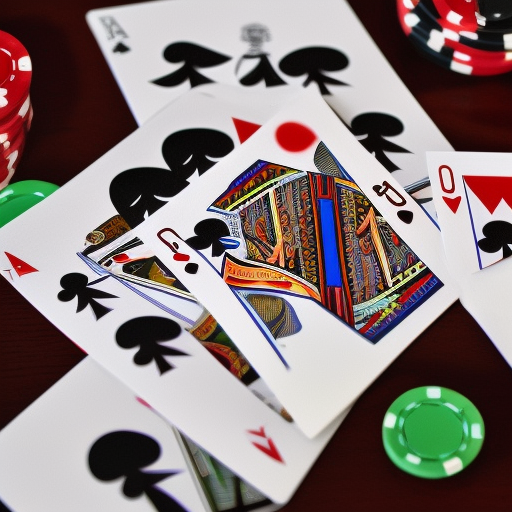When it comes to poker, understanding the terms used in the game is crucial for both new and experienced players. One such term that often comes up in poker discussions is "suit". So, what is Suit in poker terminology? In this article, we will explore the meaning of suits, their importance in poker gameplay, and some common misconceptions about them. By the end of this article, you will have a deeper understanding of poker suits and how they can enhance your gameplay.
The Four Suits in Poker: Hearts, Diamonds, Clubs, and Spades
In a standard deck of playing cards, there are four suits: hearts, diamonds, clubs, and spades. Each suit consists of 13 cards, which are numbered 2 through 10, and include three face cards (Jack, Queen, and King) and an Ace. Here is a brief overview of each suit:
- Hearts: Represented by a red heart symbol, this suit is associated with love and emotion. In some cultures, hearts are also connected to the element of water.
- Diamonds: Featuring a red diamond symbol, diamonds represent wealth and prosperity. In certain traditions, they are linked to the element of earth.
- Clubs: Displaying a black club symbol, clubs are typically associated with knowledge and communication. They are often connected to the element of air in various cultures.
- Spades: Adorned with a black spade symbol, spades signify power and authority. In some belief systems, they are related to the element of fire.
It is worth noting that these traditional associations and cultural meanings do not have any direct impact on the game of poker. However, understanding the suits and their symbols can enrich your overall poker experience.
Importance of Suits in Poker Gameplay
While the suits themselves do not hold any specific value in poker, they play a crucial role in determining the strength of a player's hand. The suit of a card is used in conjunction with its rank (the number or face value) to form various hand combinations that can lead to winning the game. Some of these combinations include:
- Flush: Consists of five cards of the same suit, not in sequence.
- Straight Flush: Comprises five consecutive cards of the same suit.
- Royal Flush: Features the Ace, King, Queen, Jack, and 10 of the same suit, and is the highest-ranking hand in poker.
In addition to these combinations, suits are also used to break ties when two players have the same hand ranking. This is known as the "kicker" rule, where the highest suit of the kicker card determines the winner.
Suit Rankings and Hand Combinations
In most poker games, suits are not ranked, meaning that no one suit is considered more valuable than another. However, there are some variations of poker, such as Bridge, where suits are ranked in the following order: spades (highest), hearts, diamonds, and clubs (lowest). This ranking is used solely for the purpose of bidding and does not affect the gameplay or hand values.
When it comes to hand combinations, suits play a vital role in determining the strength of a player's hand. As mentioned earlier, specific hand combinations like flushes, straight flushes, and royal flushes rely on the cards being of the same suit. Additionally, suits can be used to break ties in other hand combinations, such as pairs, two pairs, and full houses.
Suit-Related Poker Strategies
While suits themselves do not hold any inherent value, understanding how they interact with other cards can greatly improve your poker strategy. Some suit-related poker strategies include:
- Flush draws: When you have four cards of the same suit and need one more to complete a flush, you have a flush draw. This can be a powerful hand, as your opponents may not suspect that you are close to completing a strong hand combination.
- Suited connectors: Suited connectors are two consecutive cards of the same suit, such as the 6 and 7 of hearts. These cards have the potential to form a straight, a flush, or a straight flush, making them valuable in certain situations.
- Bluffing with suited cards: If you have two suited cards in your hand, you may be able to use this information to bluff your opponents into thinking you have a stronger hand than you do. For example, if the community cards include three cards of the same suit, you can represent a flush, even if you don't have it.
Common Misconceptions About Suits in Poker
There are several misconceptions about suits in poker that can negatively impact a player's game. Some of the most common misconceptions include:
- Believing that one suit is more valuable than another: As previously stated, suits are not ranked in most poker games, and no suit is considered more valuable than another.
- Overvaluing suited cards: While suited cards can lead to strong hand combinations, it is important not to overvalue them. Just because you have two suited cards in your hand does not guarantee that you will complete a flush or another high-ranking hand.
Mastering Poker Terminology: Enhancing Your Gameplay
A solid grasp of poker terminology, such as understanding what is Suit in poker terms, can significantly improve your gameplay. By being familiar with the four suits and how they interact with other cards, you can make better decisions during the game and increase your chances of winning. Furthermore, understanding the role of suits in poker can help you decipher your opponents' strategies and adapt your own game plan accordingly.
Conclusion
In conclusion, suits play an essential role in poker gameplay, despite not holding any specific value. By understanding the four suits and their role in hand combinations, you can enhance your poker strategy and increase your chances of winning. Additionally, debunking common misconceptions about suits can help you avoid costly mistakes during the game. So the next time you sit down at the poker table, remember the importance of suits and use this knowledge to your advantage.

